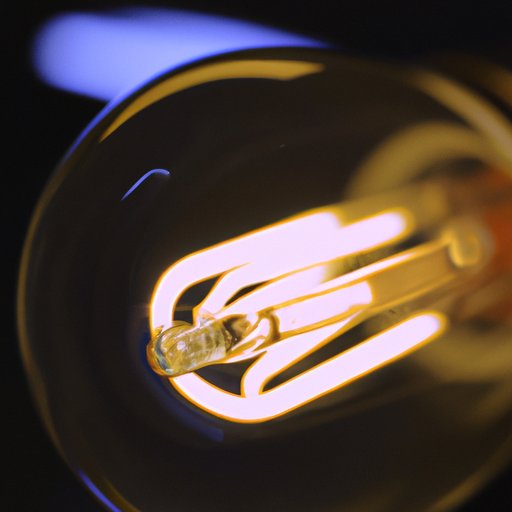Introduction
Lightbulbs are an essential part of modern life, providing us with illumination and allowing us to do many activities that require visibility. But how exactly does a lightbulb work? This article will provide an in-depth exploration of the components, history, and physics behind lightbulbs, as well as a guide on replacing a lightbulb and a comparison of different types of lightbulbs.
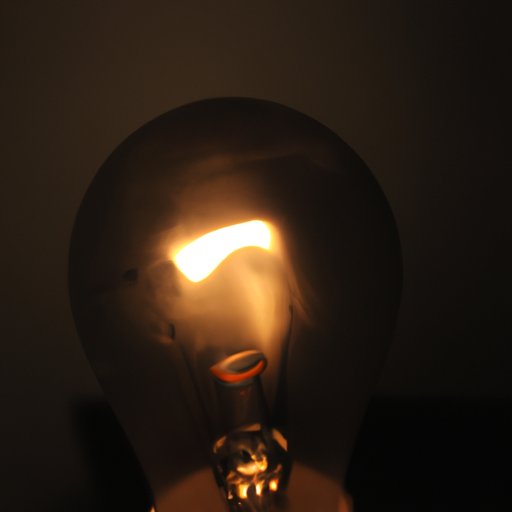
An Overview of How a Lightbulb Works
The most basic explanation of how a lightbulb works is that it converts electrical energy into light energy. This is done through the process of resistive heating, which requires a source of electricity and a conductive material inside the bulb. When electricity passes through the conductive material, it creates heat and causes the filament inside the bulb to glow, giving off light.
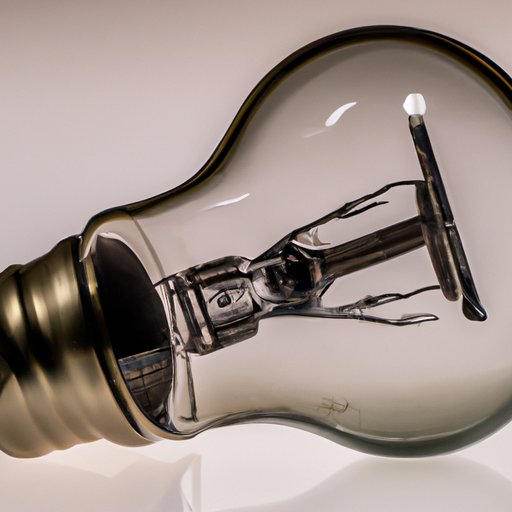
Exploring the Components of a Lightbulb
A lightbulb is composed of several components, including a base, a filament, a glass envelope, and a reflector. The base is the part of the bulb that connects to the electrical circuit, while the filament is the thin wire inside the bulb that produces light when heated by the electricity. The glass envelope is the outermost layer of the bulb, which protects the filament from damage, while the reflector helps to direct the light in a specific direction.
The Physics Behind a Lightbulb
The process of converting electrical energy into light energy is based on the principles of physics. Electricity is composed of electrons, which are negatively charged particles that move along a conductor when a voltage is applied. When electricity passes through a conductor, it encounters resistance, which is the opposition to the flow of electrons. This resistance causes the electrons to collide with the atoms in the conductor, converting the electrical energy into heat and light.
Understanding the Electrical Properties of a Lightbulb
In order for a lightbulb to operate properly, certain electrical properties must be taken into consideration. The wattage of the bulb determines how much electrical power it needs to produce light, while the voltage determines the amount of current that can pass through the bulb. Additionally, the type of bulb chosen can affect the brightness of the light produced.
Examining the History and Evolution of the Lightbulb
The lightbulb has come a long way since its invention in 1879. Early versions of the lightbulb used carbon filaments, which were inefficient and had short lifespans. Over time, more efficient materials such as tungsten and alumina were developed, leading to longer-lasting and brighter bulbs. In recent years, advances in technology have led to the development of LED and fluorescent bulbs, which are even more efficient and longer-lasting than traditional incandescent bulbs.
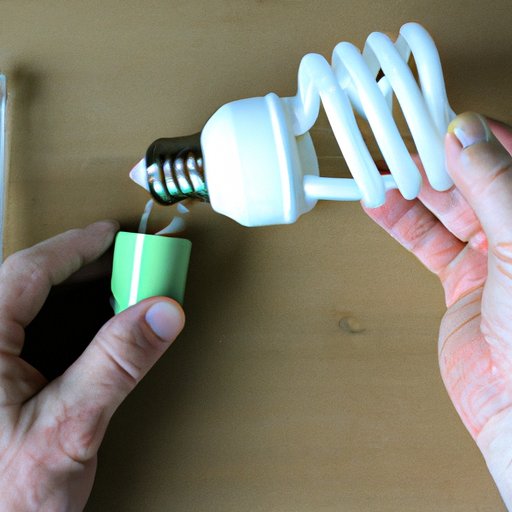
A Guide to Replacing a Lightbulb
Replacing a lightbulb is a relatively simple process, but it’s important to take safety precautions. The first step is to identify the type of bulb required, as different types of bulbs have different wattages and voltages. Once the type of bulb is identified, the old bulb should be removed and the new bulb inserted. It’s important to ensure that the bulb is securely fastened to the socket before turning on the switch.
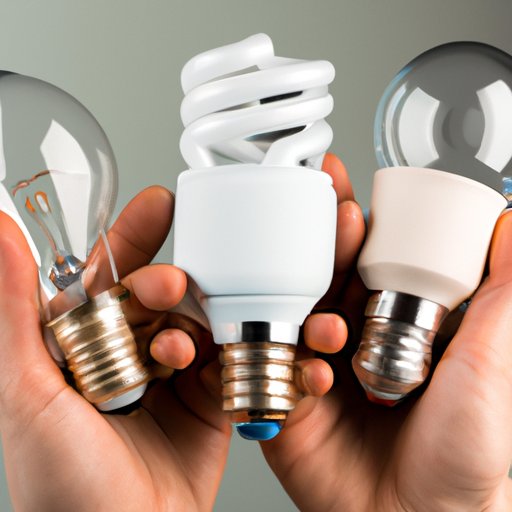
Comparing Different Types of Lightbulbs
When selecting a lightbulb, it’s important to consider the various options available. LED bulbs are the most energy-efficient option, but they can be expensive. Incandescent bulbs are less energy-efficient, but they produce a warmer, more natural light. Fluorescent bulbs are cheaper and more efficient than incandescent bulbs, but they don’t last as long. Halogen bulbs are similar to incandescent bulbs, but they are more efficient.
Conclusion
This article has provided an in-depth exploration of how a lightbulb works, from exploring the components to examining the history and physics behind it. It has also provided a guide on replacing a lightbulb, as well as a comparison of different types of lightbulbs. With this knowledge, you can now make informed decisions about the type of lightbulb that best suits your needs.
(Note: Is this article not meeting your expectations? Do you have knowledge or insights to share? Unlock new opportunities and expand your reach by joining our authors team. Click Registration to join us and share your expertise with our readers.)
